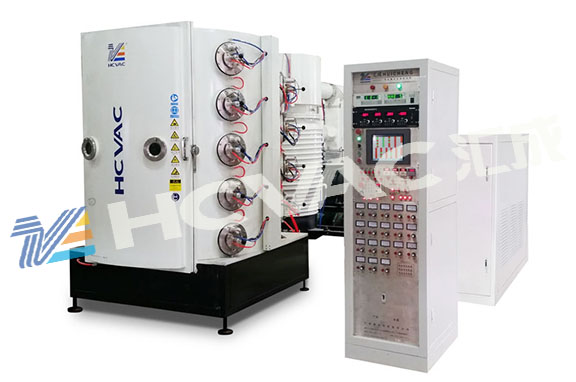pvd coating machine evaporation coating technology is the most conventional coating technology, characterized by simple equipment and easy operation. The film has high purity, good quality, and controllable thickness. Fast speed, high efficiency, clear patterns can be obtained using masks, and the film growth mechanism is relatively simple. Its drawbacks are that it is difficult to obtain crystalline thin films, the adhesion between the film and the substrate is small, and the process repeatability is not good enough. The most conventional coating technology for evaporation coating is widely used in daily life, and there is also a high demand for evaporation pvd coating machine in the market. What is the operating principle of evaporation pvd coating machine?

Evaporation coating refers to the process of depositing a substance on a solid surface by heating and evaporating it. This method was first proposed by M. Faraday in 1857 and has become one of the commonly used coating techniques in modern times. The operating principle of the evaporative
pvd coating machine is to use the resistance heating method in the vacuum chamber to melt and vaporize the metal wire tightly attached to the resistance wire, and the vaporized metal molecules are deposited on the substrate to obtain a smooth reflectivity film layer, achieving the goal of decorating and beautifying the surface of items. The structure of the evaporation coating equipment is shown in Figure 1.
Evaporating substances such as metals, compounds, etc. are placed in a crucible or hung on a hot wire as a source of evaporation. The workpiece to be plated, such as metal, ceramic, plastic, and other substrates, are placed in front of the crucible. After the system reaches high vacuum, heat the crucible to evaporate the substances inside. Atoms or molecules of evaporated substances are deposited on the surface of the substrate by condensation. The thickness of the thin film can range from hundreds of angstroms to several micrometers. The film thickness is determined by the evaporation rate and time of the evaporation source (or by the loading amount), and is related to the distance between the source and the substrate. For large-scale coating, rotating substrates or multiple evaporation sources are often used to ensure the uniformity of film thickness. The distance from the evaporation source to the substrate should be less than the Mean free path of the vapor molecule in the residual gas, so as to avoid the chemical action caused by the collision between the vapor molecule and the residual gas molecule. The average kinetic energy of vapor molecules is about 0.1-0.2 electron volts.
There are three types of steam sources Resistance heating source: It is made of boat foil or wire shaped Refractory metals such as tungsten and tantalum, and heated with current to evaporate substances above it or placed in the crucible. The resistance heating source is mainly used to evaporate Cd, Pb, Ag, Al, Cu, Cr, Au, Ni and other materials; ② High frequency induction heating source: Use high-frequency induction current to heat the crucible and evaporate substances; ③ Electron beam heating source: suitable for materials with high evaporation temperature (not lower than 2000 [618-1]), that is, materials are evaporated by bombarding them with electron beam.
Compared with other vacuum coating methods, pvd coating machine evaporation coating has a higher deposition rate and can be used to produce compound films with simple substances and less prone to thermal decomposition. In order to deposit high purity single crystal film, Molecular-beam epitaxy method can be used. The injection furnace is equipped with a Molecular beam source. When it is heated to a certain temperature under ultrahigh vacuum, the elements in the furnace shoot towards the substrate with a beam molecular flow. When the substrate is heated to a certain temperature, the molecules deposited on the substrate can migrate. High purity compound single crystal films with the required stoichiometric ratio can be obtained by growing and crystallizing according to the substrate lattice order using Molecular-beam epitaxy. The slowest growth rate of the films can be controlled at 1 single layer/second. By controlling the baffle, a single crystal thin film with the required composition and structure can be accurately made. The Molecular-beam epitaxy method is widely used to manufacture various optical integrated devices and various Superlattice structure films.



